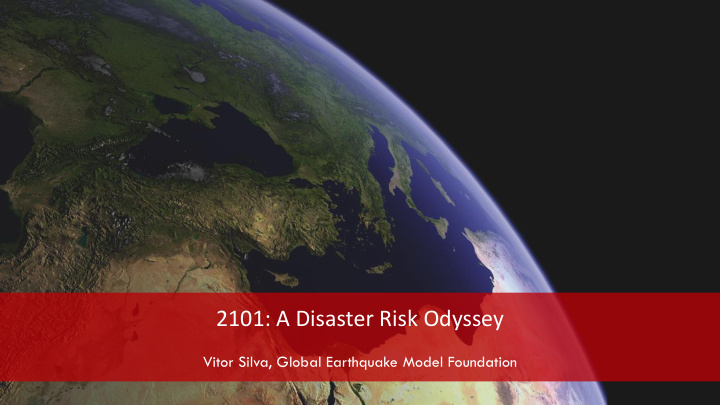



2101: A Disaster Risk Odyssey Vitor Silva, Global Earthquake Model Foundation
Hazard Exposure Vulnerability
Optical imagery (and derived products such as DEMs) enable the identification of geomorphological signatures of faulting. InSAR technology can also support mapping regions of focused geodetic strain, which could be due to strain accumulation on a fault (figure provided by Ekbal Hussain)
Mapping faults around the city of Santiago, Chile
Before 1975 1975 - 1990 1990 - 2010 After 2010 Recently released satellite data provides urban footprints according to the vintage. It can support the development of new exposure datasets, or the improvement of the spatial resolution of existing datasets.
Satellite data Crowd sourcing initiatives such as OpenStreetMap will revolutionize disaster risk assessment and management, granted that the level of detail of the structures features can be improved.
Hazard Intensity
Insufficient empirical data Incomplete analytical models
Satellite data tailed data obtained via remote sensing, aerial imagery or drones will allow a better understanding of the spatial distributio of damage, and through machine learning, an improvement of the existing vulnerability models.
Undamaged network Damaged network
Prediction of the evolution of seismic risk (economic losses) for Costa Rica 1965 1975 1985 1995 2005 2015 2025 2035 2045 2055 $180 Millions $160 $140 $120 $100 $80 $60 $40 $20 $- 1973 1984 2000 2011 2025 2050 W M PC CR OTH ADO Total: 1974-2011 Total: 2025-2050
Exposure in Sub-Saharan Africa Assessment of building distribution in the region Current and future technology will radically change the way in which disaster risk assessment is performed. Models and datasets are expected to be more accurate, reliable and up to date. The future of risk modeling is bright. Thank you
Recommend
More recommend